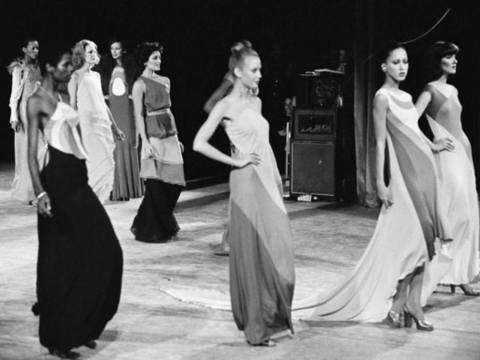
What is fashion week?
A fashion week is a one-week event during which fashion designers, brands, or "houses" showcase their talent, travel the world, and make a name for themselves. They take months and even years of preparation and hard work to get to display their latest collections in runway fashion shows to buyers and the media. These events influence trends for the current and upcoming seasons.
The most prominent fashion weeks are held in the fashion capitals of the world; New York, London, Milan, and Paris, or the "Big Four" which receive the majority of press coverage. However, they are also organized in centers such as Shanghai, Hong Kong, Sydney, São Paulo, Beijing, Singapore, Seoul, Berlin, Dubai, Los Angeles, Madrid, Monaco, Rome, Taipei, Vancouver, Copenhagen, Toronto, and Tokyo. Each fashion week generally happens twice a year. In February and March, designers showcase their autumn and winter collections. In September and October, designers showcase their spring and summer collections.
Every fashion week is a phenomenal expo. New models are discovered. New styles and themes are brought to the fore. Local fashion is featured.
 Source: Glamour
Source: Glamour
How did this get started?
The very concept of the “fashion show” originated in France. In the 1850s, French Couture Houses held private fashion shows for their most prized clients. These often involved a “fashion parade,” wherein models formed a line to showcase the salon’s wares.
 Source: Bellatory
Source: Bellatory
In 1903, a New York City shop called Ehrich Brothers put on what is thought to have been the country’s first fashion show to lure middle-class women into the store. By 1910, many big department stores were holding shows of their own. These "parades" were an effective way to promote stores and improve their status. By the 1920s, the fashion show had been used by retailers across the country. They were staged and often held in the shop’s restaurant during lunch or teatime. These shows were usually more theatrical than those of today, heavily based upon a single theme, and accompanied with a narrative commentary.
In 1943, fashion super-publicist Eleanor Lambert decided to cluster these shows into a particular time frame, called alternately “Fashion Press Week” and “Press Week.” The idea was to give fashion buyers alternatives to French fashion during World War II when workers in the fashion industry were unable to travel to Paris. This event has been followed by Paris Fashion Week in 1945, Milan Fashion Week in 1958, and finally, London Fashion Week which was established in 1994. Until 1993, shows were held in different locations, such as hotels, or lofts and then began to be consolidated in a single location.
 Source: Dazed Digital
Source: Dazed Digital
What is different today?
Fashion weeks have surely come a long way since their inception. What does the future hold? On one hand, organizers of fashion events are sensitive to the fact that modern consumers don’t always depend on editorial opinions to make their fashion choices. As a result, more of these events are opening up directly to the audience, and some shows even go so far as to build Instagrammable moments into the flow.
On the other hand, facing financial, environmental, and safety challenges, Fashion Weeks Organizers must reimagine how to present SS21 collections (and even beyond) without a live audience for the foreseeable future.
Even if NYFW is still scheduled for Sept. 13-16, Yves Saint Laurent, Pyer Moss, Gucci, Alexander Wang, Giorgio Armani, and Marc Jabobs announced they won’t be showing.
Sources:
"The history of haute couture". Harper's BAZAAR; FashionWeekOnline